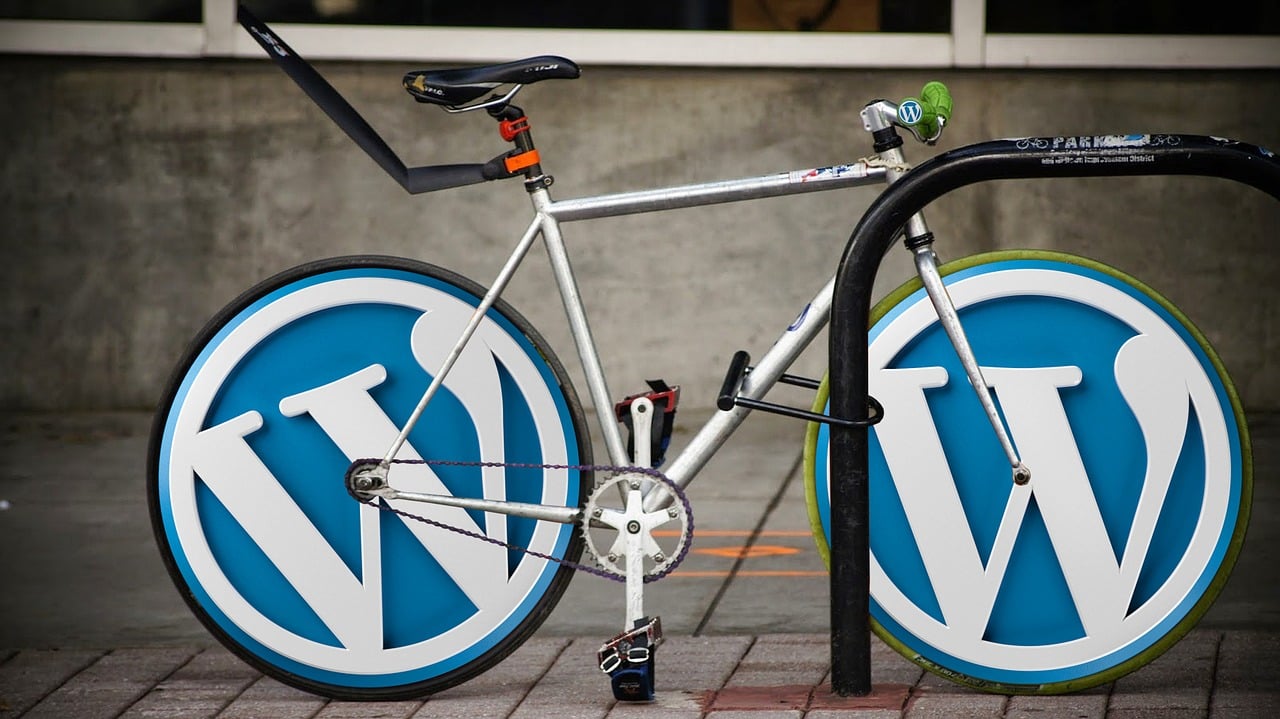- Accelerate WordPress Websites: An All-Inclusive Guide to Improving Speed
- Introduction
- Choose a Reliable Web Hosting Provider
- Utilize a Lightweight WordPress Theme
- Minimize HTTP Requests
- Optimize Images for the Web
- Implement Browser Caching
- Enable GZIP Compression
- Utilize Content Delivery Networks (CDNs)
- Minimize Redirects and Broken Links
- Optimize Database Performance
- Monitor and Analyze Performance
- Certainly, let’s delve deeper into each aspect of speeding up a WordPress website
- Leverage Lazy Loading
- Optimize WordPress Database Queries
- Enable Object Caching
- Reduce Server Response Time (TTFB)
- Implement Content Optimization Techniques
- Monitor and Manage Plugins
- Optimize WordPress Configuration Settings
- Implement AMP (Accelerated Mobile Pages)
- Utilize Web Performance Optimization (WPO) Techniques
- Stay Updated and Continuously Improve
- Understanding the Need for Speed
- Diagnosing Performance Bottlenecks
- Streamlining Backend Operations
- Optimizing Frontend Assets
- Mobile Optimization for Speed and Responsiveness
- Continuous Monitoring and Iterative Improvement
- Conclusion
Accelerate WordPress Websites: An All-Inclusive Guide to Improving Speed
Introduction
In today’s digital age, website speed is crucial for retaining visitors and ranking high in search engine results. Slow-loading websites not only frustrate users but also adversely affect conversions and bounce rates. If you’re running a WordPress website, optimizing its speed is paramount for success. In this comprehensive guide, we’ll delve into effective strategies to increase your website’s speed and enhance user experience.
In the digital age, where every second counts and attention spans are fleeting, the speed of your WordPress website can mean the difference between success and obscurity. But achieving blazing-fast performance isn’t just about satisfying search engine algorithms—it’s about delivering an exceptional user experience that keeps visitors coming back for more. In this comprehensive guide, we’ll delve deep into the intricacies of WordPress performance optimization, equipping you with the knowledge and tools needed to transform your website into a high-speed marvel.
Welcome to the enchanted realm of WordPress, where creativity flourishes and digital dreams come to life. But amidst the magic and wonder, there’s a quest that beckons every website owner: the quest for speed. In this journey, we’ll embark on a quest of our own—to unlock the secrets of WordPress performance optimization and orchestrate a symphony of speed that captivates audiences and enchants users. So, tighten your boots and sharpen your wits, for the adventure of a lifetime awaits!

Choose a Reliable Web Hosting Provider
Opt for a reputable web hosting provider that offers optimized servers for WordPress.
Consider factors like server uptime, speed, scalability, and customer support.
Managed WordPress hosting services often provide performance-enhancing features and automatic updates.
Utilize a Lightweight WordPress Theme
Select a lightweight and well-coded theme optimized for speed.
Avoid overly complex themes with excessive features that can slow down your website.
Frameworks like Underscores and Genesis are known for their speed and customization options.
Minimize HTTP Requests
Reduce the number of elements on your web pages, such as images, scripts, and stylesheets.
Combine CSS and JavaScript files to minimize HTTP requests.
Utilize tools like WP Rocket or Autoptimize to automatically concatenate and minify files.
Optimize Images for the Web
Compress images without compromising quality using tools like Smush or EWWW Image Optimizer.
Specify image dimensions to prevent browsers from reflowing content.
Consider using responsive images with srcset to serve appropriately sized images based on device resolution.
Implement Browser Caching
Leverage browser caching to store static files locally on visitors’ devices.
Set expiration headers for assets like images, CSS, and JavaScript to reduce server load and improve load times.
Use plugins such as W3 Total Cache or WP Super Cache to enable browser caching effortlessly.
Enable GZIP Compression
Enable GZIP compression on your web server to reduce file sizes and decrease loading times.
Most web hosting providers offer GZIP compression support, or you can enable it manually through plugins like WP Fastest Cache.
Utilize Content Delivery Networks (CDNs)
Content Delivery Networks (CDNs) are indispensable allies in the quest for website speed.
We’ll demystify the role of CDNs in optimizing content delivery, discussing their benefits and implementation strategies. Whether you’re serving static assets or dynamic content, CDNs offer a scalable solution to accelerate content delivery and enhance user experience.
Distribute your website’s content across multiple servers worldwide to reduce latency and improve load times.
Popular CDNs like Cloudflare, Amazon CloudFront, and MaxCDN offer easy integration with WordPress and provide additional security features.
Minimize Redirects and Broken Links
Minimize the use of redirects as they add additional HTTP requests and increase loading times.
Regularly audit your website for broken links using tools like Broken Link Checker or Screaming Frog.
Replace or fix broken links to prevent negative impacts on user experience and SEO.
Optimize Database Performance
Regularly clean up your WordPress database by removing unnecessary data, spam comments, and revisions.
Use plugins like WP-Optimize or WP-Sweep to optimize and maintain your database efficiently.
Consider disabling or limiting post revisions and autosaves to reduce database bloat.
Monitor and Analyze Performance
Utilize tools like Google PageSpeed Insights, GTmetrix, or Pingdom to monitor your website’s performance regularly.
Identify performance bottlenecks and areas for improvement based on recommendations provided by these tools.
Continuously optimize and fine-tune your website to ensure optimal speed and user experience.
Certainly, let’s delve deeper into each aspect of speeding up a WordPress website
Leverage Lazy Loading
Implement lazy loading for images, videos, and iframes to defer the loading of non-essential content until it’s needed.
Lazy loading reduces initial page load times by only loading visible content, improving perceived performance.
Use plugins like WP Rocket, Lazy Load by WP Rocket, or native browser lazy loading attributes for effortless implementation.
Optimize WordPress Database Queries
Analyze and optimize database queries to reduce the time it takes to retrieve and display content.
Use tools like Query Monitor or P3 (Plugin Performance Profiler) to identify slow database queries caused by plugins or themes.
Consider using plugins like WP-DBManager or Advanced Database Cleaner to optimize and repair database tables regularly.
Enable Object Caching
Implement object caching to store database query results and PHP objects in memory, reducing the need for repeated database queries.
WordPress caching plugins like W3 Total Cache, WP Super Cache, or Redis Object Cache offer object caching functionality.
Configure caching plugins to use a persistent object cache backend like Redis or Memcached for optimal performance.
Reduce Server Response Time (TTFB)
Optimize server response time to decrease Time To First Byte (TTFB) and improve overall page load speed.
Choose a hosting provider with fast servers and data centers located close to your target audience.
Minimize server-side processing time by optimizing PHP performance, database queries, and server configuration settings.
Implement Content Optimization Techniques
Implement critical path CSS to prioritize the rendering of above-the-fold content and improve perceived page load speed.
Inline critical CSS directly into HTML or use tools like Autoptimize or WP Rocket to automate the process.
Utilize asynchronous loading for non-essential JavaScript to prevent render-blocking and improve page load performance.
Monitor and Manage Plugins
Regularly audit and optimize the use of plugins on your WordPress website to minimize performance overhead.
Remove unnecessary or inactive plugins that add unnecessary CSS, JavaScript, or database queries.
Choose lightweight and well-maintained plugins that adhere to WordPress coding standards and best practices.
Optimize WordPress Configuration Settings
Adjust WordPress settings, such as permalink structure, post revisions, and heartbeat API usage, to optimize performance.
Limit post revisions and autosaves to prevent database bloat and reduce storage overhead.
Disable or adjust the frequency of the heartbeat API to minimize server resource usage, especially in shared hosting environments.
Implement AMP (Accelerated Mobile Pages)
Implement Google’s Accelerated Mobile Pages (AMP) to create lightweight and fast-loading versions of your web pages for mobile users.
AMP strips down unnecessary elements and optimizes content delivery for lightning-fast mobile browsing.
Use plugins like AMP for WordPress or integrate AMP directly into your theme to create AMP-compatible versions of your web pages.
Utilize Web Performance Optimization (WPO) Techniques
Explore advanced web performance optimization techniques like resource hints, preconnect, prefetch, and preloading to improve loading speed.
Use resource hints to provide browsers with information about required resources, reducing latency and improving loading times.
Preconnect, prefetch, and preload critical assets to initiate early connections and expedite resource fetching.
Stay Updated and Continuously Improve
Stay abreast of the latest WordPress updates, performance optimization techniques, and industry best practices.
Regularly monitor website performance metrics, user feedback, and search engine rankings to identify areas for improvement.
Continuously iterate and refine your speed optimization strategies
Understanding the Need for Speed
Before diving into optimization techniques, it’s crucial to grasp why speed matters. We’ll explore the profound impact of website speed on user experience, SEO rankings, and business outcomes, debunking common myths along the way. By understanding the compelling rationale behind speed optimization, you’ll be motivated to prioritize this critical aspect of your WordPress site.
Diagnosing Performance Bottlenecks
Effective optimization begins with pinpointing the underlying issues that impede your website’s speed.
In this ll guide you through comprehensive diagnostic processes, utilizing tools and techniques to identify performance bottlenecks.
From server-side configurations to frontend inefficiencies, you’ll gain insights into the specific areas that require attention.
Streamlining Backend Operations
A well-oiled backend is the cornerstone of a fast-loading WordPress website.
We’ll delve into strategies for optimizing server performance, database efficiency, and codebase optimization.
Whether it’s fine-tuning server configurations, optimizing database queries, or implementing caching mechanisms, you’ll learn how to transform your backend infrastructure into a lean, mean speed machine.
Optimizing Frontend Assets
Frontend optimization is where the rubber meets the road in delivering lightning-fast user experiences.
From optimizing images and leveraging browser caching to minimizing CSS and JavaScript files, we’ll explore a myriad of techniques to trim the fat from your frontend assets.
By mastering these optimization strategies, you’ll ensure that every element of your website loads with maximum efficiency.
Mobile Optimization for Speed and Responsiveness
In an era dominated by mobile devices, optimizing for mobile speed and responsiveness is non-negotiable.
We’ll explore best practices for mobile optimization, including responsive design principles, image optimization techniques, and mobile-specific performance considerations. By prioritizing mobile optimization, you’ll ensure that your WordPress website delivers blazing-fast experiences across all devices.
Continuous Monitoring and Iterative Improvement
Speed optimization is not a one-time endeavor; it’s an ongoing process that requires continuous monitoring and iterative improvement.
We’ll discuss the importance of performance monitoring tools, performance budgets, and performance testing methodologies.
By adopting a proactive approach to performance optimization, you’ll maintain peak performance levels and stay ahead of the curve.
Conclusion
Optimizing your WordPress website for speed is not a one-time task but an ongoing process. By following the strategies outlined in this guide, you can significantly improve your website’s performance, enhance user experience, and achieve better rankings in search engine results. Remember, every millisecond counts in the digital world, so prioritize speed optimization to stay ahead of the competition.







